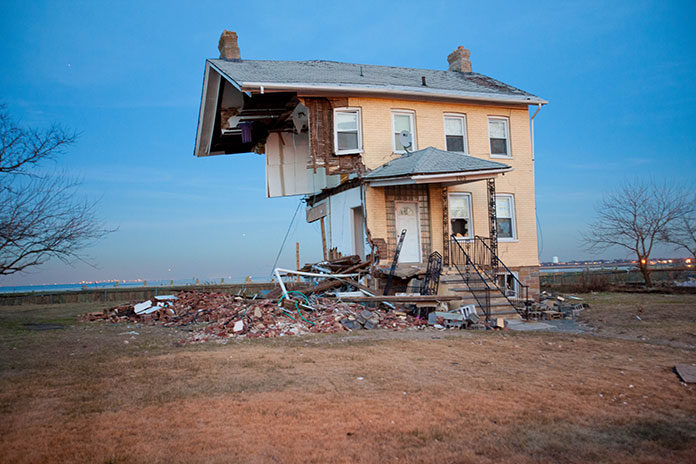
NEW JERSEY – Twelve years ago, on October 29, 2012, Superstorm Sandy ravaged through New Jersey. It was the worst in the state’s history to make direct landfall to the shoreline.
Fast forward to the year 2024. Hurricanes have wreaked havoc throughout the southern parts of the country.
As New Jersey marks Hurricane Preparedness Month and the peak of hurricane season, it’s important to be prepared as the risks from these storms have increased as a result of climate change, officials said.
So, what have we learned from Superstorm Sandy? And is our community prepared to take on another massive storm?
Ocean County Sheriff Michael G. Mastronardy, who is also the County’s Office of Emergency Management (OEM) Coordinator, reflected on the devastating time.
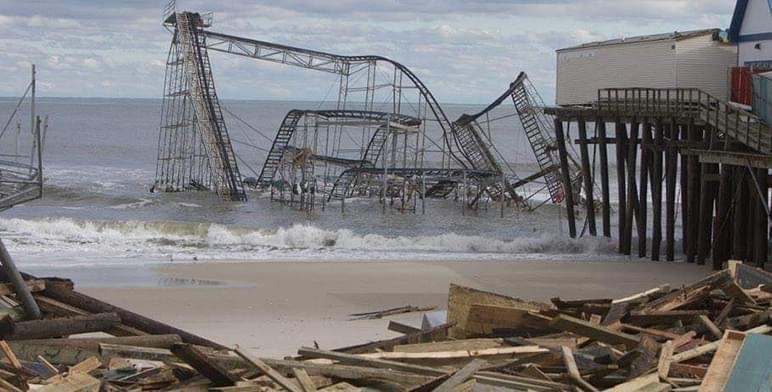
“I was Chief of Police in Toms River when Superstorm Sandy hit, and we certainly learned a lot of lessons from that,” Mastronardy said. “We didn’t expect it to hit the mainland the way it did – that wasn’t in the game plan. I don’t think we were prepared for that as far as evacuations, etc.”
Since Superstorm Sandy, Ocean County has made contingency plans. A major initiative has been the ongoing efforts to replenish our beaches, which has helped on the oceanside of the county. However, it does not help the bayside if water begins to rise.
“While we took precautions on the oceanside to prevent some of the flooding coming through, the back bays were coming up. Unfortunately, you can’t build a barrier along every inch of lagoon that we have on the bayside,” Mastronardy said.
Mastronardy explained how elevating homes in certain parts of the county will have less of an impact on any future storms than it did during Sandy.
“If you look over at the bayside of the barrier island, the majority of the homes all have been either torn down, elevated, etc., so that at different flood levels you won’t get the sustainable damage, which also means you won’t get the trash that we had to get rid of. That’s a good thing,” Mastronardy said. “So, mitigating the elevation has changed the dynamics of the impact of a superstorm such as Sandy.”
Superstorm Sandy forced not only Ocean and Monmouth counties, but the entire state to review and change storm plans.
“From an OEM standpoint, our rescue operations have totally changed. We’ve got new equipment. We’ve got better plans to get people out of harm’s way if in fact flooding does take place,” Mastronardy said. “Before a storm, we used to do fly overs, and now we have a lot of drone equipment. A lot of resources with drones that could actually evaluate before and after, and we routinely do that with any storm.”
In 2022, the Ocean County Sheriff’s Office introduced a state-of-the-art vehicle for water-based rescues. The ATV known as “SHERP” can plow through ice, mud and marshes, and will be used perform life-saving rescues. The Sheriff’s Office also now use jet-skis to navigate tight areas and small waterways.
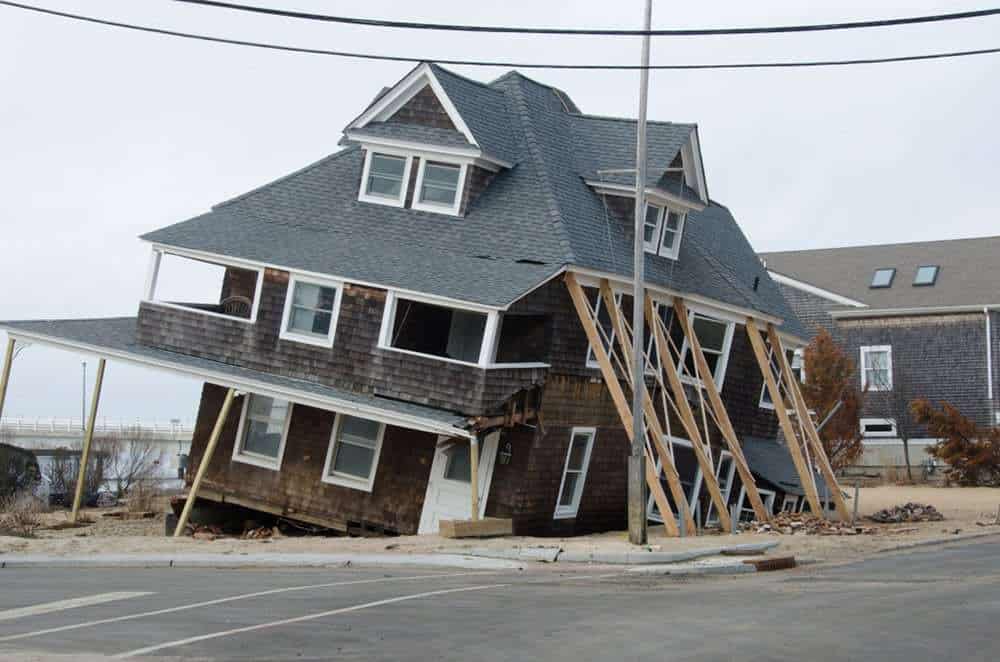
“I think we learn something every time we have a shelter in place. Hopefully there would be less people being displaced because of the mitigation impact we did with raising the homes and the codes. But as always, whatever the cause, we do have shelters,” Mastronardy said.
The county has also purchased some repetitive loss properties, to keep as open space, in places such as Good Luck Point in Berkeley, that were at risk of constant flooding. Doing this has two benefits. It creates a natural barrier to slow tides. It also keeps people out of living in places that are dangerous.
In Monmouth County, many coastal towns suffered from extreme flooding. The storm left a path of destruction, with debris scattered everywhere.
“Hurricane preparedness is about planning ahead – not just for a storm, but for the days and weeks that follow. The best time to prepare is before warnings are issued, since readiness today means resilience tomorrow,” said Monmouth County Sheriff Shaun Golden, who oversees the OEM. “The Monmouth County Sheriff’s Office, specifically the Office of Emergency Management, works year-round and collaborates with various agencies to ensure that Monmouth County is prepared when it comes to safeguarding our communities and residents, should a major weather event strike.”
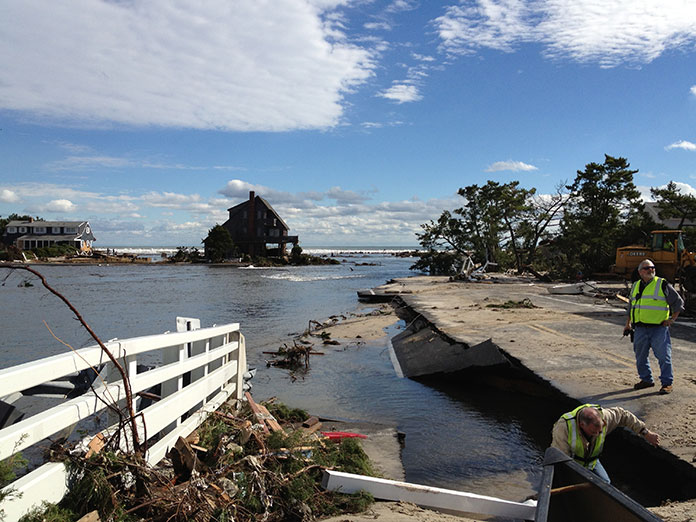
Monmouth County has established a Hurricane Emergency Plan which is reviewed and updated annually, focusing on roles, responsibilities, and communication between agencies. Since Sandy, Monmouth County OEM has implemented “Know your Zone” to educate residents, visitors and businesses about coastal evacuation zones.
“I’ll tell you where we weren’t and that is in our new Operation Center. We wish we had it during Superstorm Sandy,” Golden said. “We went through hours, days, and weeks in our old Emergency Operations Center. We have certainly come a long way with regard to the upgrades of technology and operational planning.”
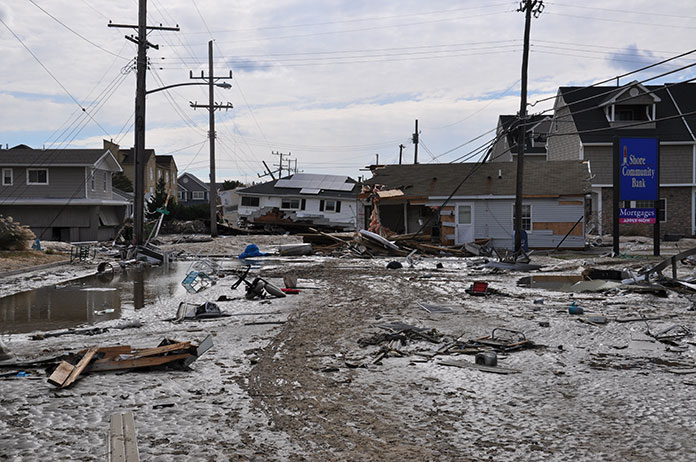
About 2,300 who were displaced due to Sandy were sheltered at Monmouth University. Out of those people, the majority were seniors. STORM (Seniors Taking On Readiness Measures) was created to equip this vulnerable community with preparedness information, a family disaster plan, and an emergency kit.
After 12 years, Ocean and Monmouth OEM have worked hard and are prepared if another “Superstorm Sandy” were to make its way through the community. “We are light years ahead of where we were when we got hit by Sandy – with a lot of help from the County Commissioners and the public,” Mastronardy said. “We’re prepared as we can be.”






